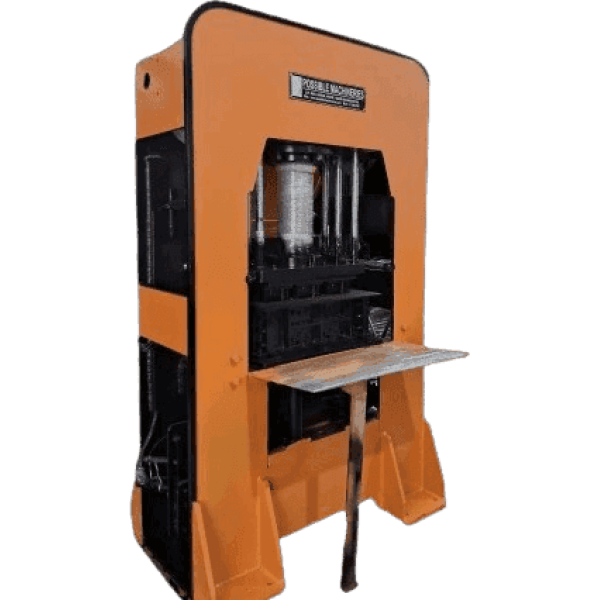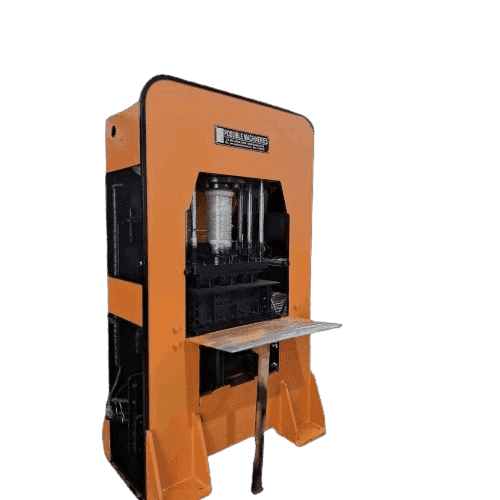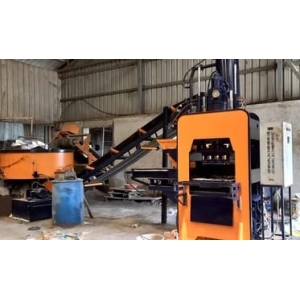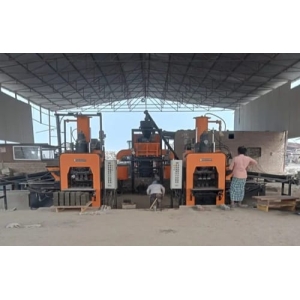CSEB (Compressed Stabilized Earth Block) Block Making Plant
A Compressed Stabilized Earth Block (CSEB) Making Plant is a specialized facility designed to produce eco-friendly, high-strength earth blocks using a mix of soil, cement, and water. The plant utilizes hydraulic compression technology to create uniform, durable blocks suitable for sustainable construction. CSEBs offer high thermal insulation, low carbon footprint, and cost-effective building solutions, making them ideal for green buildings, rural housing, and eco-friendly projects. The plant can be manual, semi-automatic, or fully automatic, catering to different production capacities and project scales.
Description
CSEB (Compressed Stabilized Earth Blocks) are gaining popularity as an eco-friendly and cost-efficient alternative to conventional bricks. The blocks are made from a mixture of soil, cement, and stabilizers, offering a sustainable building solution with excellent thermal properties. These blocks are durable, energy-efficient, and ideal for low-cost housing and large-scale construction projects.
Possible Machineries manufactures advanced CSEB Block Making Plants that are capable of producing high-quality, uniform earth blocks. The machines are designed to compress the mixture to create blocks with excellent strength and stability. The use of local soil in the production of CSEBs not only reduces the carbon footprint but also significantly cuts down on transportation costs.
By offering customized solutions for CSEB production, Possible Machineries enables builders and construction companies to adopt environmentally friendly practices while meeting the growing demand for affordable housing solutions.
CSEB (Compressed Stabilized Earth Block) Block Making Plant: Sustainable and Eco-Friendly Construction Solutions
Overview
The CSEB (Compressed Stabilized Earth Block) Block Making Plant is a state-of-the-art, automated system designed to produce eco-friendly and sustainable compressed earth blocks. These blocks are made primarily from locally sourced materials like soil, sand, and a small proportion of cement or lime as a stabilizer. The CSEB block-making process significantly reduces the need for conventional fired bricks, which have a high environmental impact due to their manufacturing process. The CSEB plant offers an innovative solution for environmentally conscious builders and developers, providing a sustainable alternative for green building construction.
This plant combines advanced technology and high-quality machinery to produce durable, cost-effective, and eco-friendly blocks that are ideal for residential, commercial, and infrastructural projects.
Key Features of CSEB Block Making Plant
🌍 Environmentally Friendly: Uses natural and locally available materials with minimal cement, reducing carbon footprint.
🔧 High-Performance Machinery: Precision-engineered machines for consistent and efficient production.
🏗️ Strong & Durable Blocks: CSEB blocks are strong, insulated, and durable, providing excellent structural integrity.
💡 Low Energy Consumption: Does not require energy-intensive firing, making the manufacturing process more energy-efficient.
🔄 Scalable Production: Suitable for both small-scale and large-scale production needs.
Machinery Involved in the CSEB Block Making Plant
The CSEB Block Making Plant is equipped with several key machines that are integral to the efficient production of high-quality blocks. Below is a breakdown of the machinery typically involved:
1. Soil & Material Preprocessing Units
Soil Crusher:
Function: Breaks down large chunks of soil into smaller, uniform particles to ensure consistent block quality.
Advantage: Reduces manual labor and increases material uniformity.
Soil Sieving Machine:
Function: Filters and separates soil to remove impurities like stones or debris, ensuring only high-quality soil is used in the mix.
Benefit: Improves the final block’s strength and aesthetic appearance.
2. Automatic Batching and Mixing Plant
Function: Accurately measures and mixes soil, sand, stabilizer (cement or lime), and water. It ensures that each batch has a consistent mix ratio for uniform block production.
Features:
Load-cell based hoppers for precise material measurement.
Automatic water dosing system to maintain the correct water content.
Timer-controlled mixing cycles for homogenous mixing.
Benefits: Improves consistency in each block and reduces material wastage.
3. CSEB Block Pressing Machine
Function: The core of the block-making plant, this machine compresses the prepared soil mix into the desired block shape. It uses hydraulic force to compact the mixture, creating high-density blocks.
Types of Machines:
Manual or Semi-Automatic Press: Suitable for smaller-scale operations.
Fully Automatic Hydraulic Press: Ideal for larger operations, offering faster cycles, higher compaction, and less manual intervention.
Cycle Time: Typically ranges from 15–20 seconds per block.
Output: 600 to 800 blocks per shift, depending on the machine’s capacity and operational efficiency.
4. Molding Machine
Function: This machine shapes the soil mixture into blocks using various molds, which can be customized to produce different sizes and shapes (e.g., rectangular, interlocking).
Benefits: Ensures uniformity in block size and shape, which is essential for structural integrity and ease of construction.
5. Curing System
Options:
Air Curing: Blocks are left to cure naturally in the open air, requiring regular moisture maintenance.
Steam Curing: Accelerates the curing process using a steam chamber, helping blocks achieve strength faster.
Purpose: Curing allows the blocks to gain compressive strength and durability. It also reduces the likelihood of cracks.
Benefit: Ensures that the blocks are ready for use in construction within a shorter time frame.
6. Pallet Feeding System and Conveyor
Function: This system automatically feeds pallets into the block-making press and then moves the formed blocks to the curing or storage area.
Benefits: Reduces manual handling, speeds up the production process, and improves overall operational efficiency.
7. Stacking and Handling System
Function: Automatically stacks the blocks in a pre-arranged layout for easy handling, curing, and storage.
Benefits: Ensures organized storage, reduces manual labor, and allows for safe and efficient handling of large quantities of blocks.
Optional Equipment for Enhanced Production
Water Recycling System: Collects and reuses water, reducing operational costs and promoting eco-friendly practices.
Automatic Packing System: For packaging cured blocks, making them ready for delivery and reducing manual labor.
Mold Cleaning System: Keeps molds clean and in optimal condition to prevent block quality degradation.
Production Flow of CSEB Block Making Plant
Material Preparation: Soil is processed, sieved, and mixed with sand, stabilizers (lime or cement), and water.
Molding: The prepared mix is transferred into molds and pressed to form compressed earth blocks.
Curing: The blocks undergo air curing or steam curing to gain strength.
Storage and Dispatch: Once cured, the blocks are stacked and stored for dispatch to construction sites.
Applications of CSEB Blocks
Residential Buildings: CSEB blocks are widely used for the construction of homes, offering great thermal insulation and strength.
Commercial Buildings: Perfect for creating durable, eco-friendly structures.
Schools, Hospitals, and Institutions: Sustainable, cost-effective construction materials for public buildings.
Low-Cost Housing Projects: Ideal for government housing schemes like Pradhan Mantri Awas Yojana (PMAY).
Benefits of CSEB Block Making Plant
Sustainability: Utilizes local soil and minimal cement, reducing the carbon footprint.
Cost-Effective: Reduces transportation costs as raw materials are locally sourced, and less cement is used compared to traditional concrete blocks.
High Strength: CSEB blocks are more durable and stronger than traditional mud blocks.
Energy Efficient: No need for kiln firing, making it an energy-efficient alternative to conventional brick production.
Healthier Indoor Environment: Offers better insulation, maintaining a stable temperature inside buildings.








Reviews
There are no reviews yet.